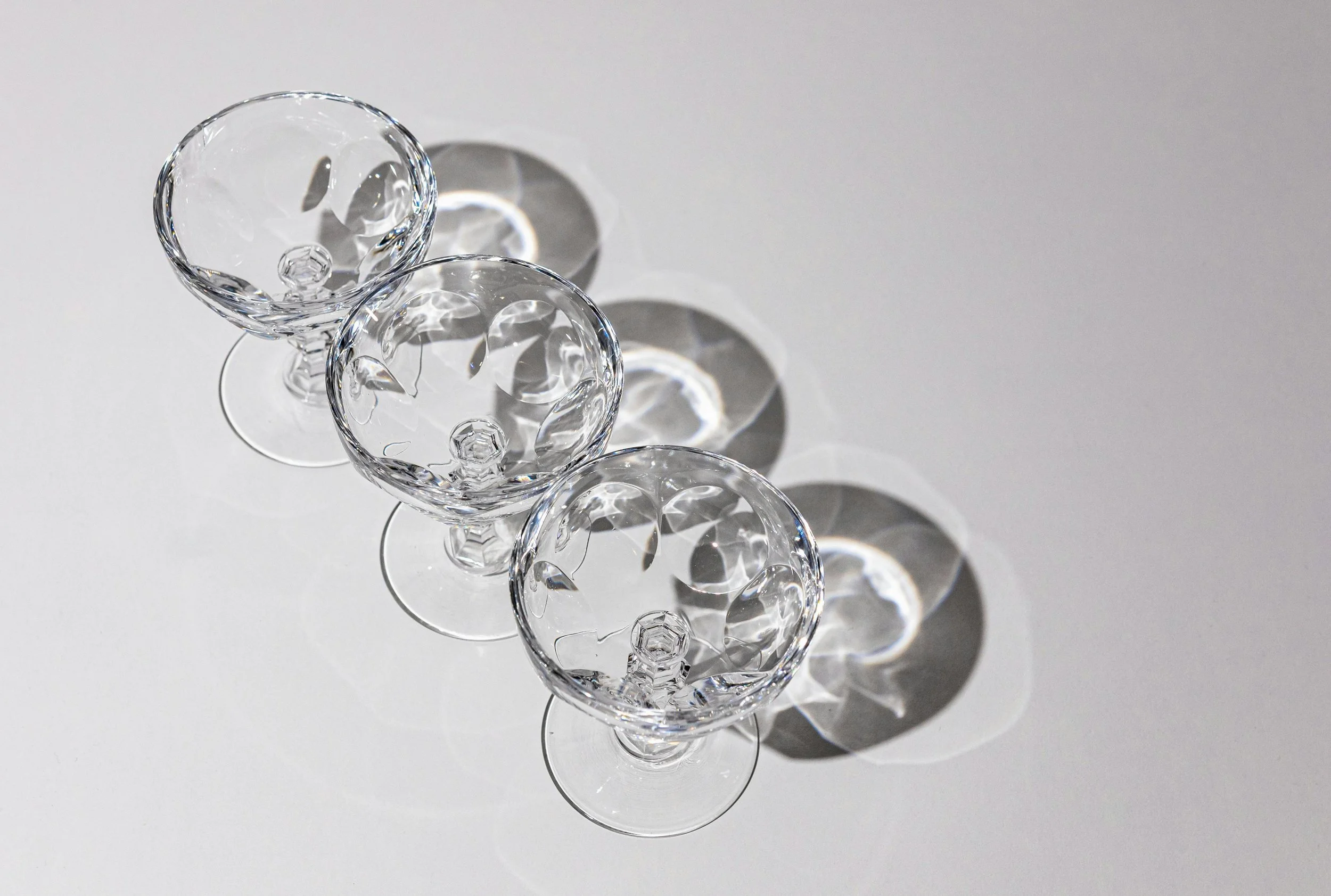The Micronutrition Lab Guide
BY OLIVIA HARRIER | OCTOBER 20, 2025
NUTRITION • metabolism • health • exercise
B eneath every plate lies a quiet architecture. Not calories or macros, but the trace intelligence that runs the system — molecules so small they’re measured in micrograms, yet so powerful they choreograph everything from metabolism to mood. Micronutrition is the body’s subtext: the mineral wiring that sparks enzymes to life, the vitamin code that allows proteins to fold, cells to repair, thoughts to form.
We tend to think of nutrition in volume — how much, how often, how many grams. But true nourishment lives in proportion: the equilibrium between abundance and precision, between what you eat and what your body can actually use.
This is the invisible geometry of human nutrition — the chemistry that makes energy intelligible.
I. The Architecture of Sweetness (Fuel): Why Micronutrients Matter More Than Macros Alone
We’ve been trained to count the obvious: grams of protein, grams of fat, grams of carbohydrate. But the body does not run on grams alone. It runs on instructions. Vitamins and minerals are the tiny directives that tell macronutrients what to do and where to go — the coenzymes, cofactors, and ionic switches that convert food into thought, muscle into motion, and wear-and-tear into repair.
Macros are the fuel. Micros are the spark plugs, wiring harness, and control board. You can floor the gas pedal all day — but without B-vitamin coenzymes, iron-bound oxygen delivery, magnesium-dependent ATP handling, and zinc-stabilized enzymes, the system coughs. The paradox of modern eating is that caloric sufficiency can coexist with micronutrient poverty. That gap shows up first not as scurvy or rickets, but as the subtler fray we normalize: flat energy, brittle focus, low-grade inflammation, poor recovery.
Editorial aside: Early 20th-century nutrition science discovered vitamins by absence — the rash of pellagra, the paralysis of beriberi, the bleeding gums of scurvy. Twenty-first-century nutrition learns them by presence — the lift in cognition, the steadier glucose, the stronger bones on D + K2 + calcium with magnesium, the fewer colds when iron and zinc are actually in range. The story evolved from “don’t die” to “how well can you live?”
Continuum Calibration — The Big Frame
Solubility governs strategy.
Fat-soluble (A, D, E, K): absorb with meals containing fat; stored; higher toxicity risk with megadoses.
Water-soluble (C + eight Bs): limited storage (B12 the exception); prioritize daily intake.
Dose lives between RDA/AI and UL. If you supplement, live in the safe window; push toward food first.
Bioavailability is half the battle. Enhance what you eat (C with plant iron; fat with A/D/E/K). Tame inhibitors (phytate, oxalate, tannins) with preparation (soak/sprout/ferment) and smart pairing.
II. The Two Languages of Nutrients (Flow): Macros Speak Volume; Micros Speak Voltage
Macros are measured in grams because they provide calories and structure.
Micros are measured in milligrams and micrograms because they provide control signals. Think of them as low-amplitude, high-impact voltages regulating the entire electrical grid of metabolism:
B-complex: coenzymes that let glycolysis, the TCA cycle, and fatty-acid oxidation proceed at speed.
Iron: the courier for oxygen — no oxygen, no oxidative phosphorylation, no ATP.
Magnesium: the silent partner in >300 enzyme reactions, including ATP handling (it’s literally Mg-ATP in cells).
Zinc: stabilizes zinc-finger proteins for gene expression; scaffolds immunity and tissue repair.
Iodine + Selenium: thyroid hormone synthesis and activation (T4 → T3), the throttle of basal metabolic rate.
Continuum Calibration — Macro ↔ Micro Handshakes
More protein? You increase demand for B6 (amino acid metabolism) and zinc (protein synthesis and wound healing).
Higher carb flux (endurance blocks, re-feeds)? Watch thiamin (B1), niacin (B3), riboflavin (B2) for carbohydrate catabolism.
Diets heavy in plant antinutrients? Prioritize vitamin C for iron absorption, soaked/fermented grains/legumes, and vary greens to manage oxalate load.
III. Fat-Soluble Intelligence (Recovery): A, D, E, K as the Long Memory of the Diet
Fat-soluble vitamins dissolve into the meal’s lipids, hitch a ride through chylomicrons, and settle into tissues for later. They are your body’s “long memory” — protective, powerful, and, in excess, unforgiving.
Vitamin A — Visual acuity, barrier integrity, immune choreography
Two lineages: retinol/retinyl esters (animal foods) and carotenoids (plants), the latter convertible with efficiency that varies by genetics, gut health, and fat co-ingestion. Sufficient A means night vision that doesn’t lag, mucosal defenses that don’t crack, and epithelial cells that differentiate on cue.
Vitamin D — Calcium whisperer, immunity modulator, muscle function
Cutaneous synthesis from UVB is elegant but season, latitude, skin tone, and sunscreen matter. Dietary D is modest; fortification fills gaps. D’s superpower is calcium trafficking: absorb in the gut, deposit in the right places (with K), keep serum in range.
Vitamin E — Membrane bodyguard
A family of tocopherols/tocotrienols that protects polyunsaturated fatty acids in cell membranes from peroxidation. Think of it as the firewall when you increase omega-3s and train hard.
Vitamin K — Coagulation & calcification governance
K1 (leafy greens) and K2 (fermented foods, some animal sources). Beyond clotting, K carboxylates matrix Gla protein and osteocalcin — the proteins that keep calcium in bone and out of artery.
Editorial aside: One modern pattern we watch: high D supplementation without paired K or magnesium. Bones don’t just want calcium; they want *D to absorb it, K to place it, Mg to use it, and weight-bearing load to signal “build here.”
Continuum Calibration — Fat-Soluble Best Practices
Take A/D/E/K with meals containing fat.
If supplementing D, check 25(OH)D periodically; pair with K2 (MK-7 commonly used) and ensure magnesium adequacy.
Avoid chronic high-dose preformed A if pregnant; meet most needs via mixed carotenoids + modest retinol.
IV. The Water-Soluble Workforce (Flow, again): Vitamin C and the Eight B’s
Water-soluble vitamins don’t loiter. With the exception of liver-stored B12, they come in, do the job, and exit. That makes consistency more important than drama.
Vitamin C — Collagen architect, iron enabler, redox balancer
C cross-links collagen (skin, gum, tendon integrity), regenerates vitamin E, and turbo-charges non-heme iron absorption. It’s the friend to plant-forward eaters and restless recoverers.
B-Complex — Your metabolic gearbox
B1 (Thiamin): decarboxylation at the door of the TCA cycle; low thiamin, slow carb burn.
B2 (Riboflavin): FAD/FMN carriers — electron shuttle.
B3 (Niacin): NAD/NADP pools — redox economy and DNA repair.
B5 (Pantothenate): CoA synthesis — the “handle” for acyl groups.
B6 (Pyridoxine): transamination, heme synthesis, neurotransmitters.
B7 (Biotin): carboxylation reactions (think fatty acid synthesis, gluconeogenesis).
B9 (Folate): one-carbon metabolism — nucleotides, methylation, new cells.
B12 (Cobalamin): myelin maintenance + methylation; found naturally in animal foods; vegans need strategy.
Continuum Calibration — Water-Soluble Tactics
Spread intake through the day if using a B-complex; some Bs are energizing — morning is friendlier.
Pair C with plant iron sources (legumes, greens, fortified oats). A squeeze of lemon works; so does bell pepper in the bowl.
Over 50 or on metformin/acid-suppressors? Screen B12 periodically.
V. The Mineral Map (Structure & Signal): From Skeleton to Synapse
Minerals are the periodic table’s contribution to human identity: they scaffold bone, set electrical gradients, and anchor enzymes.
Major minerals (≥100 mg/day): calcium, phosphorus, magnesium, potassium, sodium, chloride, sulfur.
Trace minerals (<100 mg/day): iron, zinc, iodine, selenium, copper, manganese, fluoride, chromium, molybdenum, cobalt (via B12).
Bones & Blood
Calcium & Phosphorus: hydroxyapatite scaffolding; neuromuscular signaling; ATP’s phosphate backbone.
Magnesium: ATP management, insulin signaling, neuromuscular calm; often under-consumed.
Fluids & Firing
Sodium, Potassium, Chloride: the electrolyte triad; action potentials, fluid balance, blood pressure tone.
Editorial aside: “Low sodium” is not a religion; it’s a context. Endurance athletes, sauna lovers, and hot-climate workers have materially different sodium needs than sedentary office dwellers.
Oxygen & Immunity
Iron: hemoglobin/myoglobin oxygen transport; cytochromes in the electron transport chain.
Zinc: innate/adaptive immunity, DNA synthesis, repair; a growth signal.
Copper: iron mobilization (ceruloplasmin), connective tissue enzymes (lysyl oxidase), neurochemistry.
Metabolic Throttle & Antioxidant Grid
Iodine: substrate for thyroid hormones; deficiency enlarges the gland (goiter), starves the brain.
Selenium: selenoproteins (glutathione peroxidases, deiodinases) — antioxidant defense and T4→T3 conversion.
Chromium: insulin co-factor (glucose tolerance factor discussions are nuanced but clinically, some individuals respond).
Molybdenum & Manganese: enzyme co-factors for detox pathways and bone/cartilage enzymes.
Continuum Calibration — Mineral Nuance
Iron: first question is status, not supplements. Test before treating; correct the cause (bleeding, low intake, malabsorption). Pair with C; separate from calcium and high-dose zinc.
Magnesium: citrate/glycinate are better tolerated than oxide; sleep and recovery often improve when deficient.
Iodine + Selenium: thyroid is a duet; pushing iodine without selenium can misfire in autoimmune contexts.
VI. Bioavailability (Recovery): The Art of Getting What You Ate
You didn’t eat “100% of the label.” You ate a matrix — fibers, acids, polyphenols, proteins, fats — that can inhibit, enable, or escort minerals and vitamins across the gut wall.
Inhibitors
Phytates (bran of grains, legumes, seeds): bind iron, zinc, magnesium, calcium.
Oxalates (spinach, beets, nuts, tea): bind calcium, form insoluble salts; kidney stone relevance.
Tannins (tea/coffee/legumes): reduce non-heme iron absorption.
Enhancers
Vitamin C: reduces ferric to ferrous iron; forms soluble chelates → better uptake.
Meat/Fish/Poultry factors: heme iron absorbs efficiently and boosts plant iron absorption in the same meal.
Fat: required for A/D/E/K assimilation.
Continuum Calibration — Kitchen Physics
Soak, sprout, ferment beans and grains to reduce phytates; pressure cook if you can.
Rotate greens; balance high-oxalate (spinach) with low-oxalate (kale, arugula).
Time your tea/coffee: between meals if iron status is fragile.
Build plates like algorithms: legumes + tomatoes/peppers/lemon; greens + olive oil + nuts.
VII. The U-Curve (Expansion): Between Deficiency and Excess Lies the Human Sweet Spot
Micronutrients plot a U-shaped risk curve: too little → deficiency; too much → toxicity. The work is to live in the middle — adequate, not ascetic; sufficient, not swollen.
Deficiency, modern edition
Subclinical first: the softer edge — less stamina, poor wound healing, frequent colds, increased perceived stress.
Clinical later: the textbook syndromes — iron-deficiency anemia, xerophthalmia, goiter, rickets/osteomalacia, scurvy, pellagra, beriberi.
Excess, the supplement century
Hypervitaminosis A/D: stored, cumulative; real risk with high-dose supplements.
Iron overload: acute (kids + pills = emergency), chronic (hemochromatosis genetics).
“One-nutrient fixes all”: large doses of one mineral (e.g., zinc) can induce another’s deficiency (e.g., copper).
Editorial aside: The supplement aisle looks like salvation, but biology speaks harmony, not solos. Food matrices were our original “multivitamins,” with ratios honed by ecosystems and seasons. Use targeted supplementation as an instrument, not the entire orchestra.
Continuum Calibration — Practical Guardrails
Test > guess for iron, B12, D, thyroid-related minerals.
Respect ULs. More isn’t more; more is different.
Stack interventions: diet quality, meal construction, gut health, sunlight/movement/sleep — then fill gaps.
Crosswalk: The Four Archetypes × Micronutrient Levers
FUEL — Earth
Goal: metabolic steadiness; clean biotransformation.
Micronutrient levers: B-complex, magnesium, zinc, manganese, selenium (antioxidant enzymes), choline (technically not a vitamin; methylation & lipid transport), folate/B12 (methylation, RBCs).
Plates that work: Mediterranean core, 30–40 g fiber/day across legumes, vegetables, fruit, nuts/seeds; fermented foods most days.
FLOW — Water
Goal: oxygen delivery, circulation, nerve transmission.
Micronutrient levers: iron, copper (iron mobilization), iodine/selenium (thyroid), sodium/potassium (electrolytes), B1/B2/B3 (energy throughput).
Plates that work: Heme iron sources if omnivorous; plant iron + C pairing if vegetarian; mineral-rich broths; deliberate hydration with electrolytes matched to sweat rate.
RECOVERY — Forest
Goal: redox balance, collagen synthesis, bone remodeling, sleep quality.
Micronutrient levers: vitamin C, A/D/E/K, magnesium, zinc, calcium/phosphorus, silicon (emerging collagen cofactor), copper (cross-linking).
Plates that work: Citrus/berries/peppers; leafy greens with olive oil; dairy or fortified alternatives; small fish with bones; nuts/seeds.
EXPANSION — Sky
Goal: cognitive clarity, stress regulation, long-term resilience.
Micronutrient levers: B6/B9/B12 (methylation & neurotransmitters), iodine/selenium (thyroid-brain axis), iron (oxygen to brain), magnesium (GABAergic tone), zinc (synaptic plasticity).
Plates that work: Eggs, seafood (iodine, B12, DHA), sea vegetables in rotation, pulses + greens, cacao (magnesium), pumpkin seeds (zinc).
The Modern Plate: From Theory to Tuesday
1) Build a micronutrient-dense baseline
Two handfuls of vegetables at two meals (color diversity = carotenoids, folate, magnesium, potassium).
Daily legume (½–1 cup cooked): iron, folate, magnesium, fiber for microbiome.
Seafood 2–3×/week: iodine, selenium, B12, heme iron (species-varied; anchovies/sardines add calcium).
Fermented food daily: natto/tempeh/yogurt/kefir/kimchi; K2 appears in natto; microbes support absorption.
Nuts & seeds rotation**:** almonds, walnuts, brazil nuts (selenium — go easy), pumpkin seeds (zinc).
2) Assemble meals for absorption
Add acid & C: lemon, tomatoes, peppers with plant iron.
Add fat to fat-solubles: olive oil with greens; meal-time dosing for A/D/E/K.
Mind blockers: place tea/coffee outside iron-heavy meals; soak/sprout beans/grains.
3) Personalize by context
Plant-forward: attend to B12, iron, zinc, iodine; use C pairing and sea vegetables in moderation.
High-training load: watch iron (especially menstruating athletes), magnesium, sodium, E (with PUFA-rich diets).
Pregnancy planning: secure folate early, consider iron, iodine, choline; coordinate with clinician.
When Supplements Make Sense (and When They Don’t)
Food first is not virtue signaling; it’s systems biology. But there are cases for supplementation:
Documented deficiency or high risk (iron-deficiency anemia, B12 malabsorption, low 25(OH)D in winter).
Life stage demands (pregnancy, lactation).
Dietary pattern gaps (vegan B12, inland/low-seafood iodine/selenium).
Therapeutic targets (magnesium for sleep in low-intake individuals, zinc for recurrent infections when low).
Continuum Calibration — Supplement Etiquette
Test → Correct → Re-test for iron, B12, D.
Keep D modest and paired (K2, magnesium, calcium as needed).
Avoid chronic high-dose zinc unless monitored; protect copper.
Respect ULs. The label’s font size has no relationship to biological need.
Micronutrition & Public Health: From Hidden Hunger to Human Capital
Deficiency is not just an individual inconvenience; it is an economic drag. Iron-deficiency anemia in a child blunts attention and school performance; iodine deficiency in pregnancy can lower a population’s cognitive ceiling. The solutions operate at three scales:
Supplementation (fast, targeted: vitamin A capsules; iron + folate in pregnancy; multiple-micronutrient powders for kids).
Fortification (quiet, wide: iodized salt; D in milk; folate in flour).
Biofortification (long-game: breeding crops with higher zinc, iron, or provitamin A).
Editorial aside: We tend to think of “nutrition policy” as food pyramids and plate icons. It’s actually civilizational engineering: more secure micronutrients → more robust brain development → a smarter, more resilient society.
Troubleshooting: Patterns We See (and Fix)
Always tired + normal calories → screen iron, B12, folate, magnesium, thyroid (iodine/selenium context).
Plant-based + frequent dizziness → iron strategy with C; check B12, zinc.
Leg cramps + sleep issues → intake and form of magnesium; overall potassium from food.
“High D” supplementer + normal bones? → add K2, ensure magnesium, verify calcium sources; reconsider dose.
Recurrent infections → marginal zinc is common; consider short, moderate repletion if low; don’t crush copper.
Micronutrient Tableaus (At-a-Glance)
Enhance absorption
Iron (plant) ⇢ + Vitamin C, + meat/fish/poultry, − tea/coffee at meals, − high-dose calcium at the same time.
A/D/E/K ⇢ + fat at the meal.
Calcium ⇢ + vitamin D sufficiency; rotate lower-oxalate greens.
Common antagonisms
High zinc → ↓ copper.
High calcium (supplemental timing) → ↓ iron and magnesium uptake.
Low stomach acid (PPIs) → ↓ B12, iron absorption.
Putting It All Together: The Micronutrient Day
Breakfast (Flow/Fuel): Steel-cut oats cooked with milk or fortified alt; fold in pumpkin seeds (zinc) and blueberries (C); finish with yogurt (B12, calcium) or kefir. Coffee after.
Lunch (Fuel/Recovery): Lentil-tomato soup (iron + C), arugula/olive-oil salad (K + fat), sardines on whole-grain toast (calcium, D, B12, heme iron).
Snack (Expansion): Brazil nut (selenium — just 1), dark chocolate (magnesium), citrus.
Dinner (Recovery/Flow): Grilled salmon (selenium, B12, D), roasted potatoes (potassium), sautéed kale with olive oil (K + fat), lemony chickpeas (iron + C).
Supplement nudges (contextual): D3/K2 with dinner in winter if labs low; B12 if vegan; magnesium glycinate in the evening if intake is low and sleep is brittle.
FAQ, but Make It Elegant
Do I need a multivitamin?
Maybe — as insurance for pattern gaps — but not as a license to ignore food. If you use one, consider a product that respects ULs and avoids megadoses of fat-solubles and zinc.
Can I “fix” low iron with spinach?
Spinach is high in iron and oxalate; it’s not the hero we think. Mix plant sources (lentils/beans/fortified grains) with vitamin C; consider heme iron if omnivorous; test, don’t guess.
Is iodized salt necessary if I “eat clean”?
If you avoid processed foods and dine mostly at home, yes — a modest, consistent iodine source matters (iodized salt, seafood, occasional sea vegetables with portion awareness).
What about organ meats and liver pills?
Nutrient-dense, yes — but watch vitamin A load, especially in pregnancy. Rotate, don’t rely.
Can supplements replace sunlight?
You can replace serum D; you can’t replace the layered physiology of light exposure. Think both/and: safe, seasonal sun + food + tailored supplementation if needed.
The Takeaway (and the Tone)
Micronutrition is not asceticism. It’s intentionality. Build plates that carry intelligence — colors, textures, microbes, minerals — and assemble them to absorb. Where your biology, lifestyle, or season creates a gap, correct it precisely. That’s not diet culture; that’s design.
Live between the lines: above deficiency, below excess, inside the window where cells hum and days feel truer to your potential.
Lab Note
All physiological claims, deficiency/toxicity syndromes, bioavailability interactions, and public-health strategies referenced in this Guide are documented in The Micronutrition Lab Note — our companion reference page with line-by-line citations and pull-quotes. (Link: The Micronutrition Lab Note.)
For The Lab Continuum Members — Quick Clinical Hooks
Screening shortcuts: CBC + ferritin/TSAT for iron; 25(OH)D for D; MMA or holo-TC for B12 when in doubt; TSH with reflex to FT4/FT3 + consider iodine/selenium context; Mg RBC if symptoms outstrip serum.
Dosing heuristics (illustrative, not prescriptive):
Iron bisglycinate in divided doses with C if deficient, away from calcium/coffee/tea; re-test 6–8 weeks.
Magnesium glycinate 200–400 mg elemental/day as tolerated; adjust form for GI.
D3 individualized to labs, paired with K2 (MK-7) and dietary calcium sufficiency.
Interactions to respect: zinc:copper balance (e.g., ~8–12:1 intake contextually), calcium-iron timing, PPI/metformin effects on B12/iron.
Lifestyle anchors: sleep sufficiency → magnesium appetite; strength training → bone mineral accrual efficiency (needs Ca/D/K/Mg), endurance blocks → iron accounting (especially menstruating athletes).
As ever: this is education, not medical advice. Personalize with your clinician, test thoughtfully, and chart progress in your Lab Log.
II. Antioxidants Aren’t Magic
The cultural counter‐punch was predictable: drown the chaos in antioxidants. Smoothies, serums, supplements—an industry built on neutralizing ROS. But biology doesn’t work in absolutes. Antioxidants can’t simply erase free radicals; in excess, they can even blunt beneficial cellular signals.
Free radicals are essential messengers in hormesis—the adaptive stress that makes you stronger. Exercise, sauna, fasting: all briefly increase oxidative stress, triggering repair pathways that leave cells more resilient. The goal, then, isn’t eradication; it’s regulation.
III. Redox Balance: The Real Metric of Youth
Scientists use the term redox balance—reduction and oxidation in equilibrium—to describe this dynamic dance. When the system is balanced, mitochondria hum efficiently, inflammation quiets, and repair enzymes stay on cue. When it’s skewed, free radicals become a feedback loop of damage and depletion.
Restoring that balance isn’t a single act but a rhythm: steady sleep, nutrient‐dense food, consistent movement, and emotional recovery. Glutathione, catalase, superoxide dismutase—your body’s built‐in antioxidants—all depend on micronutrients like selenium, zinc, and magnesium. These enzymes do the subtle work supplements rarely match.
IV. The Art of Controlled Fire
Think of oxidative stress like controlled fire: too little, and the system stagnates; too much, and it burns out. The art of longevity isn’t in extinguishing the flame but in tending it—using oxygen’s volatility as energy, signal, and renewal.
In that light, free radicals stop looking like chaos and start looking like conversation: the body’s biochemical way of negotiating adaptation. The trick is learning to listen.

Founder & Science Editorial Director
Proof Over Vibes
Every claim in this feature is supported in The Micronutrition Lab Notes, a tidy page with the actual peer reviewed papers and pull‑quotes so you can see the evidence, not just our edit.
This content is for informational and educational purposes only. It is not intended as, nor should it be considered a substitute for, professional medical advice, diagnosis, or treatment. Always seek the advice of your physician or other qualified health provider with any questions you may have regarding a medical condition, treatment, or before making any health-related decisions.
Get The Lab In Your Inbox
Inside the Lab
Get the full Lab Guides, Lab Notes, and member salons. Evidence-driven, design-forward, zero fluff.
Deep-dive Guides + reference Notes
Member Q&As and salons
Curated product intel
OR READ
Zone 2 Decoded: Mitochondria in Real Life
BY OLIVIA HARRIER
OR READ
Zone 2 Decoded: Mitochondria in Real Life
BY OLIVIA HARRIER
OR READ
Zone 2 Decoded: Mitochondria in Real Life
BY OLIVIA HARRIER
OR READ
Zone 2 Decoded: Mitochondria in Real Life
BY OLIVIA HARRIER
OR READ
Zone 2 Decoded: Mitochondria in Real Life
BY OLIVIA HARRIER
OR READ
The Glucose Lab Guide
METABOLISM
The Glucose Lab Guide
OR READ
Zone 2 Decoded: Mitochondria in Real Life
BY OLIVIA HARRIER
OR READ
The Zone Two Lab Guide
OR READ
The Vitamins Lab Guide
NUTRITION
The Vitamins Lab Guide
EXERCISE
The Zone Two Lab Guide
Inside the Lab
Unlock the full experience: in-depth Lab Guides, research backed protocols, and member-only Q&As that bring longevity science to life.
Evidence-driven, zero fluff.
Immersive deep-dives
Exclusive retreat perks
Curated product intel
METABOLISM
The Glucose Lab Guide
NUTRITION
The Vitamins Lab Guide
EXERCISE
The Zone Two Lab Guide
METABOLISM
The Glucose Lab Guide
NUTRITION
The Vitamins Lab Guide
EXERCISE
The Zone Two Lab Guide
METABOLISM
The Glucose Lab Guide
NUTRITION
The Alcohol Lab Guide
EXERCISE












